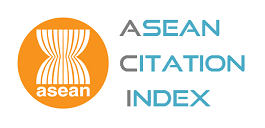การพัฒนาทักษะการคิดวิเคราะห์ของนักศึกษาครู ชั้นปีที่ 2 มหาวิทยาลัยราชภัฏสกลนคร Development of Analytical Thinking Skills of the Second Year Student Teachers in Sakon Nakhon Rajabhat University
Keywords:
-Abstract
บทคัดย่อ
การวิจัยครั้งนี้มีวัตถุประสงค์เพื่อ 1) เปรียบเทียบทักษะการคิดวิเคราะห์ของนักศึกษาครูในด้านเนื้อหา ความสัมพันธ์ และหลักการกับเกณฑ์ที่กำหนด 2) เปรียบเทียบประสิทธิภาพของสื่อที่ใช้ในการพัฒนาทักษะการคิดวิเคราะห์ และ 3) เปรียบเทียบทักษะการคิดวิเคราะห์ของนักศึกษาครูจำแนกตามภูมิหลัง กลุ่มเป้าหมายเป็นนักศึกษาครูชั้นปีที่ 2 ใน 4 โปรแกรมวิชา คือ การศึกษาปฐมวัย วิทยาศาสตร์ ภาษาอังกฤษ และสังคมศึกษา จำนวน 237 คน วิธีดำเนินการวิจัยใช้การวิจัยเชิงปฏิบัติการ เครื่องมือที่ใช้ในการวิจัย ประกอบด้วย ใบงาน 8 ใบ สื่อวีดิทัศน์ หรือข่าว และแบบบันทึกแสดงความคิดเห็น วิเคราะห์ข้อมูลด้วยความถี่ ค่าเฉลี่ยร้อยละ และการวิเคราะห์เนื้อหา ผลการวิจัยสรุปได้ดังนี้
1. นักศึกษาครูทำคะแนนการคิดวิเคราะห์ผ่านเกณฑ์ร้อยละ 60 จำนวน 210 คน และไม่ผ่านเกณฑ์ จำนวน 27 คน นักศึกษาโปรแกรมวิชาวิทยาศาสตร์ ได้คะแนนเฉลี่ยร้อยละการคิดวิเคราะห์สูงสุด รองลงมาเป็นโปรแกรมวิชาภาษาอังกฤษ การศึกษาปฐมวัย หมู่ 2 การศึกษาปฐมวัย หมู่ 1 และสังคมศึกษา ตามลำดับ เมื่อพิจารณาการคิดวิเคราะห์เป็นรายด้าน นักศึกษาครูทำคะแนนเฉลี่ยร้อยละ ด้านความสัมพันธ์ได้สูงสุดคิดเป็นร้อยละ 76.31 รองลงมาเป็นด้านหลักการ และด้านเนื้อหา โดยมีคะแนนเฉลี่ยร้อยละ 75.20 และ 69.13 ตามลำดับโปรแกรมวิชาภาษาอังกฤษ ได้คะแนนเฉลี่ยร้อยละสูงสุดด้านเนื้อหา ส่วนด้านความสัมพันธ์และด้านหลักการโปรแกรมวิชาวิทยาศาสตร์ได้คะแนนเฉลี่ยร้อยละสูงสุด นอกจากนี้นักศึกษาครูทำคะแนนการคิดวิเคราะห์ ทั้ง 3 ด้านผ่านเกณฑ์ร้อยละ 60
2. สื่อประเภทคลิปวีดิทัศน์ ทำให้นักศึกษาครูมีคะแนนเฉลี่ยการคิดวิเคราะห์สูงกว่าสื่อประเภทข่าว/บทความ
3. ผลการเปรียบเทียบทักษะการคิดวิเคราะห์ของนักศึกษาครูจำแนกตามภูมิหลัง
3.1 นักศึกษาที่สำเร็จชั้นมัธยมศึกษาตอนปลายโปรแกรมศิลป์ - ภาษา ได้คะแนนเฉลี่ย ร้อยละการคิดวิเคราะห์สูงสุด รองลงมาเป็นโปรแกรมวิทย์ - คณิต และโปรแกรมศิลป์-คำนวณตามลำดับ
3.2 นักศึกษาที่บิดา-มารดามีการศึกษาระดับปริญญาตรี ได้คะแนนเฉลี่ยร้อยละการคิดวิเคราะห์สูงสุด รองลงมาเป็นนักศึกษาที่บิดา-มารดา มีการศึกษาต่ำกว่าปริญญาตรี และสูงกว่าระดับปริญญาตรี ซึ่งได้คะแนนเฉลี่ยร้อยละการคิดวิเคราะห์เท่ากัน
3.3 นักศึกษาที่ได้เกรดเฉลี่ยสะสมระหว่าง 3.51-4.00 ได้คะแนนเฉลี่ยร้อยละการคิดวิเคราะห์สูงสุด รองลงมาเป็นนักศึกษาที่ได้เกรดเฉลี่ยสะสม 3.01-3.50, 2.01-2.50 และ 2.51-3.00 ตามลำดับ
นักศึกษามีความคิดเห็นต่อประโยชน์ที่ได้จากการคิดวิเคราะห์ ดังนี้ได้ความรู้หรือข้อคิดที่จะนำไปใช้ในชีวิตประจำวัน ทำให้คิดได้รอบคอบ และมีเหตุผลมากขึ้น ทำให้คิดอย่างมีระบบ และมีขั้นตอน คิดได้เร็วขึ้น รู้จักคิดวิเคราะห์หาสาเหตุและคำตอบ รู้จักวางแผนก่อนลงมือทำ ได้แลกเปลี่ยนความรู้ ความคิดกับเพื่อน กล้าแสดงความคิดเห็น คลิปวีดีโอทำให้ได้แนวคิดหลายแง่มุม ได้นำการคิดวิเคราะห์มาใช้ในการทำงานหรือเรียนวิชาอื่น และได้เรียนรู้การทำงานเป็นทีม
Abstract
The purposes of this study were to : 1) compare student teachers’ analytical thinking skills scores in the aspects of content, relation and principle with the determined criterion, 2) compare efficiency of the media used for development of student teachers’ analytical thinking skills, and 3) compare analytical thinking skills among second year student teachers in the 4 programs of study as classified by personal background. The target group was the second year student teachers belonging to 4 programs of study, namely early childhood education, science, English, and social studies, totaling 237 people. The research methodology was action research. The tool used in the study consisted of 8 work sheets, media of video clip typeor news, and a note-taking form for making comment on training in analytical thinking. Analysis of data was conducted using frequency, average of mean, percentage and content analysis.
The findings can be concluded as follows:
1. Of all the student teachers, 210 gained a criterion score of analytical thinking which passed the 60% criterion while 27 student teachers did not passed. Student teachers of the science program gained the highest percentage mean score. Next below were those of the English program, of the early childhood education program group 2 and group 1, and of the social studies program. As analytical thinking was considered by aspect, the respectively student teachers gained the highest percentage mean score of 76.31% of analytical thinking in the aspect of relation. Next below were the percentage mean scores of 75.20 and 69.13 in the aspects of principle and content respectively. Student teachers of the English program gained the highest percentage mean score in content while those of the science program gained the highest percentage mean score in the aspects of relation and principle. All student teachers were able to pass the score set at the 60% passing criterion from all of the 3 aspects of analytical thinking.
2. Student teachers gained a higher mean score of analytical thinking from the medium of video clip type than that from the medium of news/article type.
3. The results of comparing analytical thinking skills among student teachers according to personal background.
3.1 Student teachers who were senior high school graduates in the program of art-language gained the highest percentage mean score of analytical thinking, next below were the percentage mean scores of those graduates in the programs of science-math and art-math respectively.
3.2 Student teachers whose parents graduated with a bachelor’s degree gained the highest percentage mean score of analytical thinking, next below were the percentage mean scores of those whose parents had an educational attainment lower than and higher than the undergraduate level. The percentage mean scores of these two last groups whose parents had a different background of their educational attainment were equal.
3.3 Student teachers whose GPAs received in the first year were between 3.51 and 4.00 gained the highest percentage mean score in analytical thinking, next below were student teachers whose GPAs were in the 3.01-3.50, 2.01-2.50 and 2.51-3.00 GPAs ranges respectively.
Student teachers’ opinions on benefits received from analytical thinking were as follows: having obtained knowledge or an idea which is able to be applied in daily life, being able to think thoroughly and having more reason, being able to think systematically and step by step, being able to think faster, knowing how to do analytical thinking about what the cause is including an answer given to it, knowing how to make a plan before the commencement of the performance, having an exchange of knowledge and opinion between the classmates, having the courage to express an opinion, video clips having generated an idea from every angle, having applications of analytical thinking in job performance or learning all the courses, having got learning of how to work as team.







